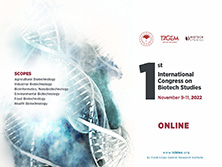Biotech Studies
2023, Vol 32, Num, 1 (Pages: 010-016)
Obtaining haploid plants by irradiated pollen culture in oil seed crops
2 Department of Food Engineering, Faculty of Engineering, Munzur University, 62000, Tunceli, Türkiye DOI : 10.38042/biotechstudies.1273824 - Haploid plant production is of great importance to shorten the breeding period in plant breeding programs. Obtaining pure lines in plant growing programs require an intensive work with huge labor and time. Obtaining one hundred percent homozy-gous pure lines is a key point for the improvement and development of new cultivars. Haploid plants with a single set of homozygous chromosomes have become a valua-ble tool in plant breeding. Dihaploid plants that are homozygous at all loci with dou-bling of their chromosomes can be propagated by seed and reach full homozygosity in a single generation. Traditional methods take seven years to reach homozygosity. Dihaploidization methods provide significant advantages in terms of gaining homozy-gosity in a short period of one year and bringing pure lines into agriculture. Anther culture and irradiated pollen technique are among the most widely used techniques in this respect; where physical or chemical agents are used to induce mutated pollen grains and anthers that are subsequently employed to develop dihaploids through in vitro cultures. These techniques are a good source to facilitate gene mapping, cyto-genetic research, and evolutionary studies. Irradiated pollen culture techniques have been applied to many oilseed crops to obtain pure lines. This study highlights some salient features of producing dihaploids using irradiated pollen grains and their maintenance. Keywords : Biotechnology Pure line Dihaploidization
















